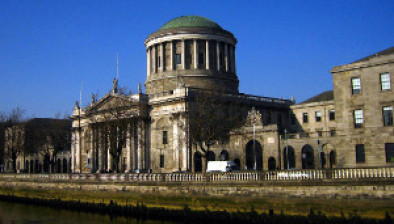NI High Court: Court rejects challenge in Belfast neighbours’ three-year hedge-height dispute

Northern Ireland’s High Court has rejected all grounds of a judicial review application regarding the height of a hedge in a Belfast neighbourhood.

About this case:
- Citation:[2023] NIKB 70
- Judgment:
- Court:NI High Court
- Judge:Mr Justice Adrian Colton
The court supported the tribunal decision which found that the hedge blocked light, and rejected claims that the decision was unlawful or gender-based.
Background
The applicant sought leave to challenge a February 2022 decision of the Valuation Tribunal to dismiss an appeal against a remedial notice issued by Belfast City Council from November 2020.
The remedial notice related to a complaint under the High Hedges Act (Northern Ireland) 2011, made by her neighbour, who resided in Rosemount Park, Belfast. He complained that the hedge was adversely affecting his enjoyment of domestic property, by acting as a barrier to light.
The applicant asserted that it was not a hedge, but rather, a line of trees, which were cut back regularly. She explained that she retained the trees mainly to accommodate birds and bats that lived in them, and wildlife, such as hedgehogs.
A council official arranged to visit the site in October 2020. He took measurements at the site and provided a report. His conclusion was that the structure was a hedge, and it was taller than the recommended height. He noted that the trees were fast-growing, and that their height should be reduced.
The specification was that the height must be trimmed regularly to ensure that it never exceeded a height of 10m above ground level. Having received the notice, the applicant exercised her statutory right of appeal to the Valuation Tribunal.
The unanimous decision of the tribunal was that the appeal against the remedial notice was not upheld, and the tribunal ordered that her appeal should be dismissed.
The applicant’s grounds of challenge
The court noted that when dealing with a judicial review challenge to a specialist tribunal established by statute, the court should pay due deference to the expertise of the decision maker.
Here, the applicant argued that the appeal decision was unlawful in several respects. She noted that in the tribunal’s decision it made reference to the words “she states” and “she had”. She argued that at no other point in the tribunal’s decision was anyone else’s gender mentioned.
As a consequence, she claimed that the decision contravened The Sex Discrimination Order (1976) (Amendment) Regulations (Northern Ireland) 2016, by taking account of her gender in its decision-making process.
She also complained that the council wrongly took into account “the rights of the community in general” and “the wider area”, and in doing so considered factors outside the 2011 Act.
She contended that the tribunal took account of immaterial facts/considerations, such as the effect that the hedge had on blocking light into the complainant’s first floor window. She argued that this window did not have planning permission, which was supplemented by an email from the assistant planner at Belfast City Council.
The applicant further contended that the tribunal failed to take account of material facts/considerations, such as photographs of the line of trees, photos which showed gaps between the trees, meaning they could not constitute a hedge under the definition of section 2(2) of the 2011 Act, and various emails.
She argued that the decision was procedurally unfair and that it lacked transparency. She emphasised that the decision was made in the absence of the parties, and at the very least she contended that such tribunals should be “held by Zoom to improve”.
Consideration
The court opened by noting that they found the applicant to be a sensitive, courteous and sensible litigant. However, the judicial review, when properly analysed, bore all the hallmarks of a merits challenge to factual conclusions arrived at by experts.
Going through her grounds of challenge, the judge found nothing objectionable in the specific references to her gender in the decision. Repeated references to “the appellant” could have avoided the use of the words “her” or “she”, but the decision expressly referred to the genders of other relevant parties.
The court accepted that it was her genuine perception that her gender had been singled out; however, despite this, the court had no hesitation in rejecting this as a ground for judicial review of the decision.
In relation to the complaint concerning a lack of planning permission for the first-floor window, a number of matters were relevant. This issue was not drawn to the attention of the tribunal, and compliance with planning permission was not an issue raised in the appeal, therefore, it could not be taken into account.
Further, the tribunal decision made specific reference to “windows”, and the site inspection noted the effect of the trees on the complainant’s home and garden. The unequivocal factual finding of the tribunal was that the trees constituted a hedge and caused a significant obstruction to daylight and sunlight in the property. Reference to the property was clearly not confined to a single elevated window.
In relation to the complaint about procedural unfairness, the court noted that the procedure adopted by the tribunal was dictated by statute. That procedure was “faithfully followed in this process”.
Conclusion
Ultimately, the court concluded that there was no error of law identified in the impugned decision. There had been no procedural unfairness, and the decision of the tribunal was a rational one which was plainly open to it.
Therefore, it was not appropriate to grant leave in this case, as the threshold for leave set out in the case of Ni Chuinneagain [2022] NICA 56, being an arguable case having a realistic prospect of success, had not been met.








